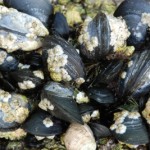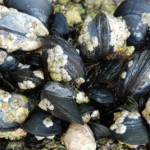Search results
Rootschat
September 25, 2008 by Chris
Filed under Blank Family Tree, Genealogy Research Resources, Sharing Genealogy Information

Do your past generations hail from Scotland?
If they do, you will want to head straight over to the forums at Rootschat where there is a fantastic forum that will interest anyone doing Scottish research and it is so well organized that every county in Scotland has its own designated area.
Chris over at Scotland’s Greatest Story tells us that you can also find threads for practicing your Gaelic (Scottish and Irish).
We wouldn’t want you to miss this great site as it has a lot to offer a genealogy beginner digging up their Scott’s roots.
There are also wonderful resources for those interested in English, Welsh, Manx, Channel Islands and Irish history,
For more on this subject visit: Scottish Genealogy News and Events.
An Irish Culinary Tradition – Edible Seaweeds
September 14, 2008 by Chris
Filed under Articles, Family History, Preserving Your Family Tree, Public Records
 I grabbed this recipe from The Ballycastle Blog: Irish Genealogy and More. Found it so interesting I thought I’d share it with you. The time of the Great Hunger or (The Gotta Mór); Ireland 1845-7, was a bleak time in Irish history. With widespread crop failures and disease that devastated an already weakened people, seaside communities could turn to the sea and thus managed a little better. While men fished, women with their children in-tow hunted the beaches during low tides gathering the numerous varieties of shellfish and seaweeds. A species of seaweed known as Sleabhach which grows from fall to spring on rocks became a staple.
I grabbed this recipe from The Ballycastle Blog: Irish Genealogy and More. Found it so interesting I thought I’d share it with you. The time of the Great Hunger or (The Gotta Mór); Ireland 1845-7, was a bleak time in Irish history. With widespread crop failures and disease that devastated an already weakened people, seaside communities could turn to the sea and thus managed a little better. While men fished, women with their children in-tow hunted the beaches during low tides gathering the numerous varieties of shellfish and seaweeds. A species of seaweed known as Sleabhach which grows from fall to spring on rocks became a staple.
This seaweed is something many of us are familiar with in sushi dishes; you might know it as Nori; today a major Japanese crop worth millions of dollars.
Try out this old Irish recipe’ and impress your Japanese friends.
Sleabhach agus Ruacháin
(Slough-uck a-guss Roo-caw-in)
Nori and Cockles
Ingredients per individual serving
3-4 oz. Nori
15 – 20 Cockles
Butter
Milk.
Cook the Nori in milk for an hour. Cook the cockles in their own juice. If the Nori sheets have not broken up put them in a food-processor for a few moments Serve with a Nori mound in the centre, pour over it a little of the cockle juice and top it with a generous blob of butter. Surround the Nori with the cockles and serve.
I have never seen Nori or the inside of a sushi restaurant, but believe it should work. The original is delicious and cockles go particularly well with “Sleabhach” though other types of shellfish were also used. Perhaps someone who tries the recipe might post his or her culinary review.
See additional Irish family history articles and lessons learned in earlier posts below and in the archives.
This posting is from The Ballycastle Blog: Irish Genealogy and More.
…
Where to Next?
An Irish Culinary Tradition – Edible Seaweeds
September 11, 2008 by Chris
Filed under Blank Family Tree
 I grabbed this recipe from The Ballycastle Blog: Irish Genealogy and More. Found it so interesting I thought I’d share it with you.
I grabbed this recipe from The Ballycastle Blog: Irish Genealogy and More. Found it so interesting I thought I’d share it with you.
The time of the Great Hunger or (The Gotta Mór); Ireland 1845-7, was a bleak time in Irish history. With widespread crop failures and disease that devastated an already weakened people, seaside communities could turn to the sea and thus managed a little better. While men fished, women with their children in-tow hunted the beaches during low tides gathering the numerous varieties of shellfish and seaweeds.
A species of seaweed known as Sleabhach which grows from fall to spring on rocks became a staple. This seaweed is something many of us are familiar with in sushi dishes; you might know it as Nori; today a major Japanese crop worth millions of dollars.
Try out this old Irish recipe’ and impress your Japanese friends.
Sleabhach agus Ruacháin
(Slough-uck a-guss Roo-caw-in)
Nori and Cockles
Ingredients per individual serving
3-4 oz. Nori
15 – 20 Cockles
Butter
Milk.
Cook the Nori in milk for an hour. Cook the cockles in their own juice. If the Nori sheets have not broken up put them in a food-processor for a few moments Serve with a Nori mound in the centre, pour over it a little of the cockle juice and top it with a generous blob of butter. Surround the Nori with the cockles and serve.
I have never seen Nori or the inside of a sushi restaurant, but believe it should work. The original is delicious and cockles go particularly well with “Sleabhach” though other types of shellfish were also used. Perhaps someone who tries the recipe might post his or her culinary review.
See additional Irish family history articles and lessons learned in earlier posts below and in the archives.
(This posting is from The Ballycastle Blog: Irish Genealogy and More.)
…
Where to Next?
Blank Family Tree with Step-by-Step Instructions
…
